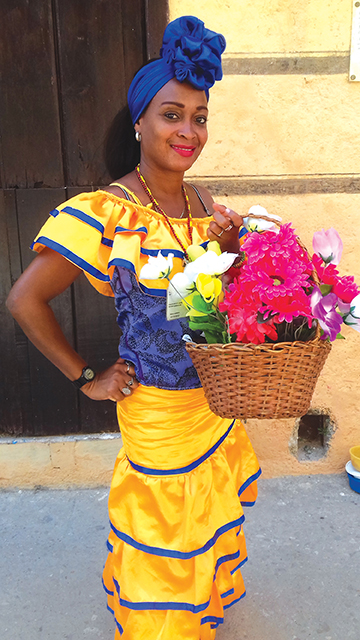Twenty three boats and a hundred intrepid cruisers joined the Salty Dawg Rally to Cuba (published May 2017)
Landing in Cuba is like stepping off a time machine. Colonial era architecture, 1940’s and 1950’s era American cars in great shape, oxen drawn ploughs, trash burned by incinerator or open air, and more. And, add in the many unique features of Cuba—plenty of Cuban cigars, farmers and elderly ladies with a stogie stuffed in their mouths, colorful clothing, upbeat music, and much more. Crews from 23 Salty Dawg vessels visited Marina Hemingway, Havana, and nearby areas in April 2017, learned a lot, and are preparing a wealth of information that will be posted on our website to inform fellow sailors.
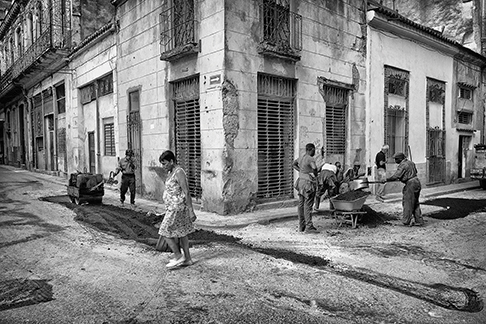 So how did we get the opportunity to visit Havana and northwest Cuba for two weeks? While restrictions on Americans visiting Cuba have eased somewhat, there are still considerable requirements in place on the types of activities that are acceptable to U.S. Officials. Regular tourist activities are not permitted. But, with the Salty Dawg Sailing Association being a tax-exempt educational organization, it was a natural fit for this organization to hold a rally to Cuba built around an educational theme.
So how did we get the opportunity to visit Havana and northwest Cuba for two weeks? While restrictions on Americans visiting Cuba have eased somewhat, there are still considerable requirements in place on the types of activities that are acceptable to U.S. Officials. Regular tourist activities are not permitted. But, with the Salty Dawg Sailing Association being a tax-exempt educational organization, it was a natural fit for this organization to hold a rally to Cuba built around an educational theme.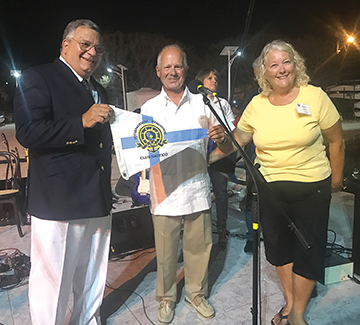
This rally was the inverse of a typical rally; instead of vessels leaving at close to the same time, vessels left at different times based on weather and boat speeds, with all aiming to arrive April 5th. Because of the U.S. Government limit of 14 days in Cuba, all wanted to maximize the time they could spend and not be late for the research activities. Seventeen vessels departed from the Eastern Caribbean, most from the U.S. or British Virgin Islands, and others from Key West. The 1,200-mile passage from the Virgin Islands took 7 to 9 days. From Key West, it was just an overnight passage.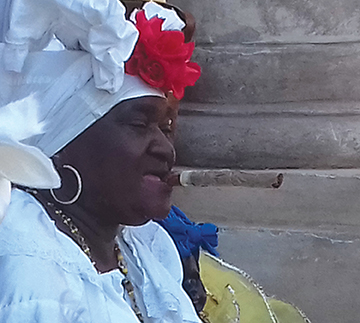
WHY A SALTY DAWG RALLY?
The idea for the Rally began last summer with several members of the association suggesting that a Salty Dawg Rally could fulfill an educational role by researching topics related to Cuba that would be of interest to Americans visiting Cuba for the first time by boat. The goal was to produce a report that is more broadly focused than the limited view of a cruising guide and with personal experiences and recommendations from a large group of sailors. We set out to collect information on topics like Cuban music, culture, casual dining, transportation, cultural activities and communications, in addition to boating and cruising information. The resulting material would be provided free of charge via the Salty Dawg website, www.saltydawgsailing.org, to educate and inform fellow cruisers. Such an educational program is one of the 12 topical areas that are permitted for a people-to-people program permitted by U.S. regulations for U.S. citizens visiting Cuba. It is a lot of work, but a learning experience for all involved.
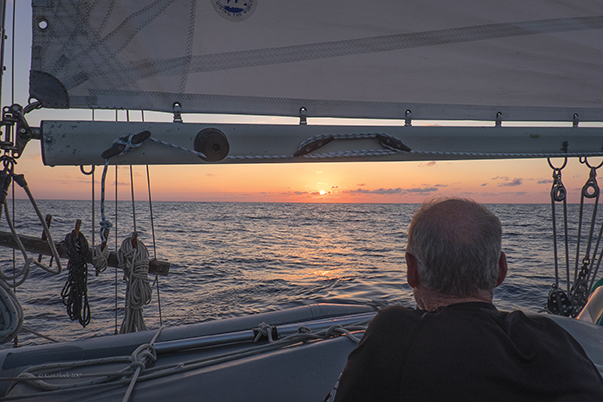 So, the next challenge was how to make it happen. Several volunteers stepped forward, with Salty Dawg member, Director of Communications, author of this article and experienced blue water sailor Hank George and his wife Seale leading the team. To keep things manageable for a volunteer organization, the fleet was limited to 24 boats. And, it was decided, with a two-week limit on the visit, to visit just Marina Hemingway and use that as a base for our research in Havana and areas nearby in northwest Cuba.
So, the next challenge was how to make it happen. Several volunteers stepped forward, with Salty Dawg member, Director of Communications, author of this article and experienced blue water sailor Hank George and his wife Seale leading the team. To keep things manageable for a volunteer organization, the fleet was limited to 24 boats. And, it was decided, with a two-week limit on the visit, to visit just Marina Hemingway and use that as a base for our research in Havana and areas nearby in northwest Cuba.
Cuba is a large island, nearly 500 miles from end to end. We could easily have over-extended ourselves by trying to cover too large an area in a two-week period. We had 24 boats in the final fleet, many more on the waiting list, and at the last moment one of the boats had mechanical issues and was not able to leave Key West. But, 23 intrepid US sailing vessels with over 100 total crew made the passage to Cuba.
A large number of administrative details were required, including registering vessels, offering a package of chart kits and cruising guides, designing and offering Salty Dawg Rally to Cuba shirts, sale of hats, collecting a nominal rally fee (only $300 for SDSA members), reserving space at Marina Hemingway, arranging for drivers and vehicles, scheduling tours and transportation to support research activities, planning a welcome party and farewell dinner with Hemingway International Yacht Club, researching and distributing information on Cuba, entry into Cuba, fees, filing USCG Form 3300 for all vessels, sharing information on insurance issues and options, arranging for Chris Parker weather services, hosting pre-departure social and briefing activities, developing and making assignments for the research program, and so on. It involved many details far beyond the normal for a rally. And the work of the volunteers was completed splendidly.
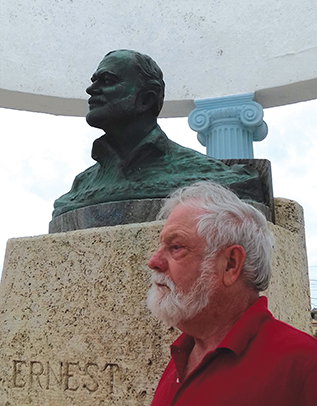 PASSAGE & ARRIVAL
PASSAGE & ARRIVAL
The large fleet of vessels departed from the Eastern Caribbean in late March, as well as the smaller fleet from Key West in early April, with nearly all arriving on April 5. The offshore passage for the vessels coming from the BVI and USVI was a fairly mild, downwind sail with some periods of motoring. The biggest challenge was the three-knot adverse Gulf Stream current close to the Cuban coast for the last 60 miles.
By dawn and early morning on April 5, these boats were greeted to a beautiful sunrise over Havana. Rally vessels coming down from Key West had a mild passage, with good sailing all the way to Havana. As vessels were permitted, the parade of Salty Dawg vessels entered Marina Hemingway. I can attest that the level of excitement was high. After an efficient processing of five vessels at a time by the Cuban Customs, Immigration and Health officials, blocks of boats moved from the customs dock to assigned locations along the bulkheads in the marina. We were here! After years of thinking about what it would be like to visit Cuba, and months preparing for the rally, we had landed in Cuba, and were not to be disappointed.
After getting settled in the marina, converting our U.S. dollars to Cuban cucs, and reviewing our individual research assignments, sailors shifted into their mode of research work, interspersed with boat repairs after a passage and planning the next outing to learn even more. Also, there was a lot of walking – perfect for walking off the large lunches or dinners we had sampled at any one of several nearby paladars, which are small, family-run restaurants. The walking is due to the size of the large marina complex; each of the four parallel canals where boats are tied up beam-to are over half a mile long. It can be quite a hike from your boat to the head of the canal, cross over to the next canal and walk out to visit a fellow Salty Dawg. Those with bicycles aboard made out well. Use of the dinghy was a worthwhile alternative to get around the marina.
So after two-weeks in Cuba, what are some of the general observations? I try to highlight these in the following paragraphs.
LOVE THOSE CUBANS
The most memorable feature of the whole visit, and the people to people interactions, was the warmth, courtesy, and friendliness of the Cuban people. They are well educated, always ready to greet you as they pass by, caring and reasonably happy with life. They revere Fidel and his memory, but are quietly and subtly critical of the government. They don’t seem to correlate the two. But, the people are the most significant and lasting memory of the visit to Cuba.
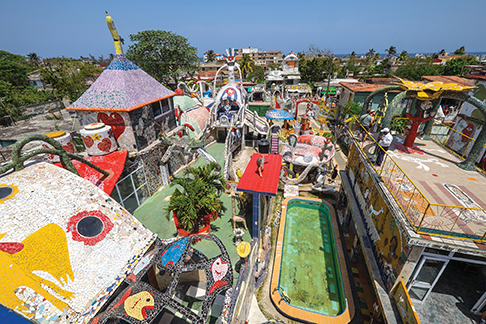 HABANA VIEJA
HABANA VIEJA
A major section of Havana, Habana Vieja or “Old Havana,” is a large area of Spanish colonial-era buildings dating from the 1700 and 1800s. However, other than ones that have been renovated by the government along major tourist routes or in major squares, they are in a severely degraded state. You have to wander down side streets to get a true feeling for the state of buildings in Havana. While in a poor state of repair, the underlying architecture is dramatic, and tells the story of a once wealthy city, when the gold and other valuable metals from South and Central America were being moved through Havana and on to Spain. Walking these streets is fun, as we met Cubans, sampled some local foods in paladars and soaked in some of the history.
AMERICAN CLASSICS
The primary mode of transportation was aboard the antique American automobile taxi’s. For those who grew up in the 40s or 50s, this was a throw-back to our childhoods. Large numbers of these cars dotted the roads and were the vast majority of the cars seen. A sprinkling of older Russian Ladas and newer Japanese and European cars interspersed the classic car review that was constantly rolling by. Most of these American classics had long-ago been refitted with Japanese or Russian diesel engines, belching clouds of diesel exhaust. But, the car bodies and much of the interiors were close to original. We really felt like we had been transported back in time as we watched these old classics lumbering down the road.
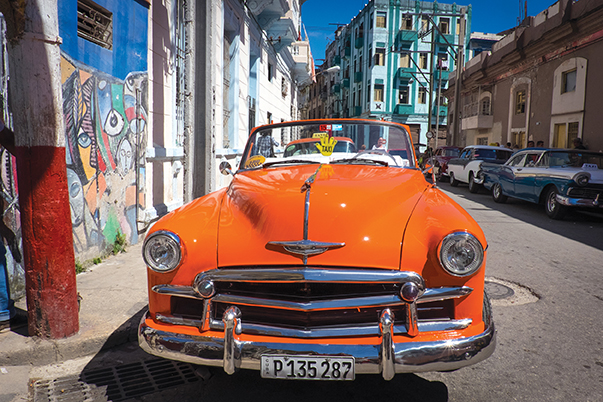 Other modes of transport such as local buses, double decker in-town tour buses, horse-drawn carriages and coco taxies (small, three wheeled, partially enclosed scooters) give travelers options in getting around nearby Havana. And, taxis and tour buses are options for longer travel.
Other modes of transport such as local buses, double decker in-town tour buses, horse-drawn carriages and coco taxies (small, three wheeled, partially enclosed scooters) give travelers options in getting around nearby Havana. And, taxis and tour buses are options for longer travel.
MUSIC & ART
Cubans are very talented with their art and music. Bright splashes of color are seen in much of the art. Bold, brash, rhythmic and often loud characterize the newer versions of rhumba, salsa, son cubano and more. And, the elegant and soft sounds of classical music, chamber music, and street trios warm the heart and stimulate a relaxing afternoon or evening.
THE FOOD
As for provisioning, supplies are a little difficult to come by. Chicken and pork are the usual meats available to the public. Spices are not common. Government run restaurants (the majority) offer fairly bland foods at moderate to high prices. Family run paladars usually offer large portions and more flavorful food at lower prices. In general, we found common dishes like grilled pork, rice and beans, grilled or fried fish and steamed or raw vegetables were offered at almost all paladars, with little change between each restaurant. A few of the paladars offer creative dishes but culinary tastes are still developing in Cuba.
GOVERNMENT CONTROL
Cuba is still a communist country, with central government control of nearly all aspects of the economy and society. The effect of the government control and monitoring was pervasive throughout our visit, from scheduling events and tours, to attempts to give gifts to locals, to wary discussion with locals along the streets of Havana. Small steps in loosening certain areas like taxi ownership and small, family run restaurants are creating opportunities for a few. Perhaps, as in China, these steps will gradually expand to allow broader participation in the economy, foreign investment, and industrial and technology development.
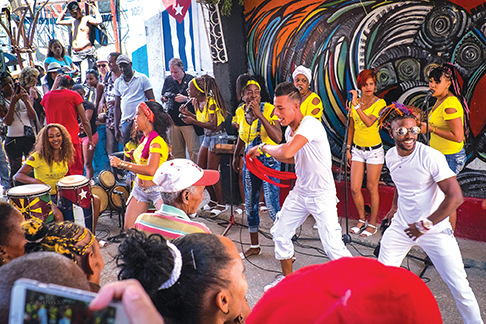 CUBAN SAILORS
CUBAN SAILORS
Cuban sailors, unfortunately, are confined to sailing only along the coast. And there is very little of that. A boat, even a small one, would be a large investment beyond the means of nearly all Cubans. At the time of the Revolution in 1959, there were over one hundred yacht clubs in Cuba. Now there is only one. Thanks to the devoted efforts of Commodore Jose Miguel Diaz Escrich, the Hemingway International Yacht Club of Cuba is just this month reaching its 25th anniversary. Most Salty Dawg captains or owners joined the club as members and are now officially “yatistas.”
CONCLUSION
Blue water cruising gives us the opportunity to visit the many peoples and cultures around the world. And, visiting Cuba today is no less an amazing and fulfilling experience as any other country. The Salty Dawgs who participated in this rally will be posting information on our website to be a resource for future sailing visitors to Cuba; go to www.saltydawgsailing.org and click on the “Cuba Today” tab.
Our hearts go out to the wonderful Cuban people, and we can only hope that their government comes into the 21st Century and grants their industrious, creative and friendly people the freedom and assistance to pursue their dreams. And, if they make progress on human rights and individual freedom, we can also hope the U.S. government will find that a basis to relieve the travel and commercial restrictions between our two countries.
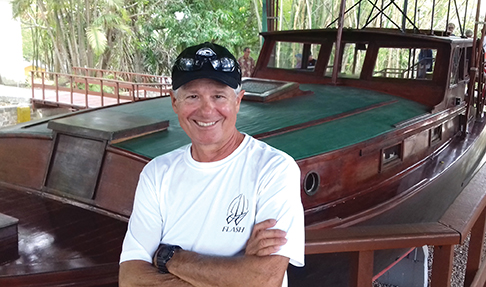 For all who participated, the rally was an epic voyage, that created many special memories.
For all who participated, the rally was an epic voyage, that created many special memories.
Hank and Seale George are veteran cruisers who sail their Catana 47 Flash to the Caribbean from the Chesapeake Bay every year. Hank is a member of the Salty Dawg Board of Directors and the association’s Communications Director.

















